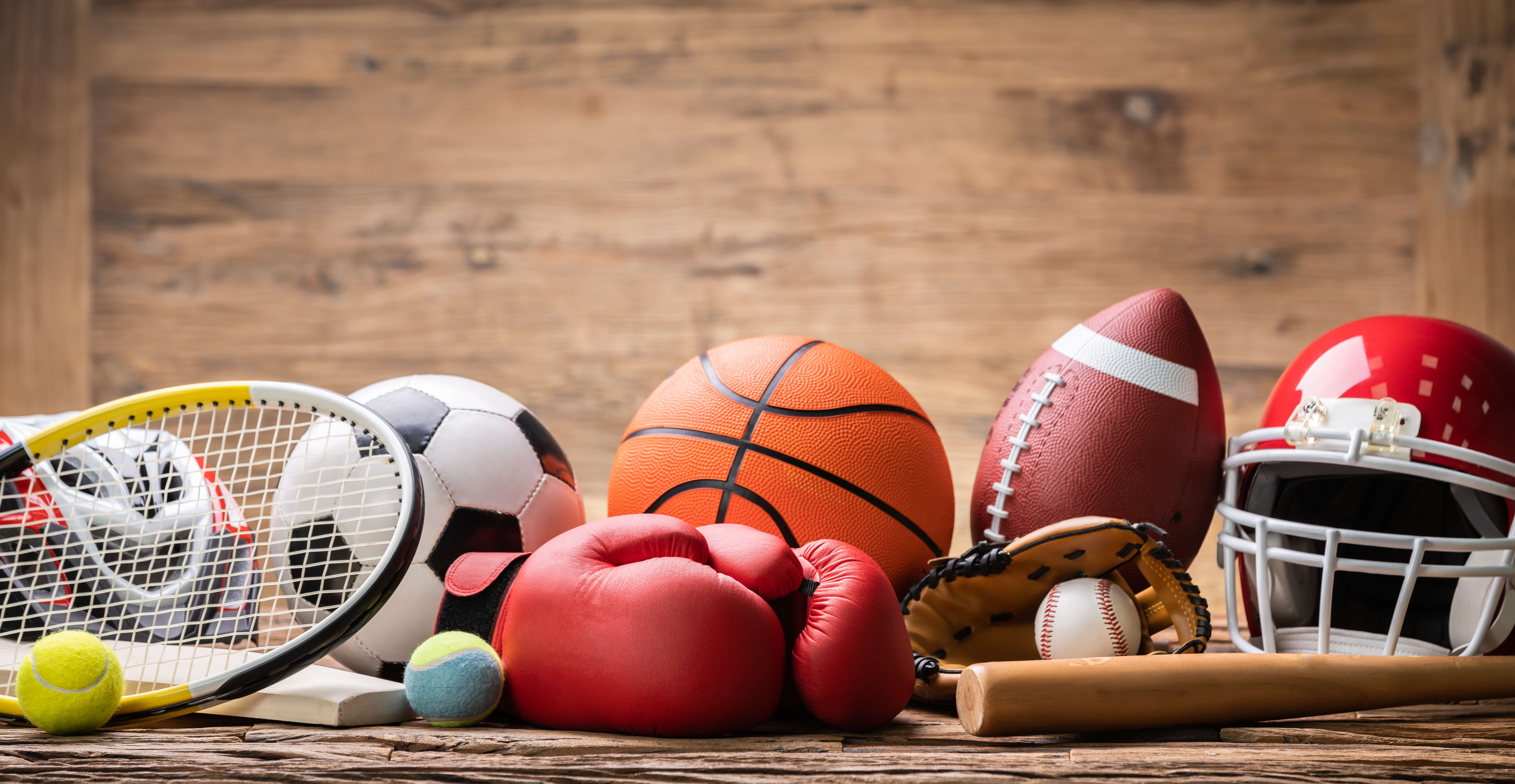
Plastics have revolutionized sports, the performance of professional athletes, and the stadiums that fans enjoy all year round. From innovative apparel and footwear designs that utilize plastics to make them lighter and more durable for an every-day walk or the Olympics finals and everything in between, to the state-of-the-art stadiums that make use of recycled plastics to increase performance, plastics help athletes of all experience levels hit their peak performance.
Plastics have changed every aspect of sports from safety gear and equipment to apparel and footwear by making these products lighter, stronger, and more flexible. Hard plastic compounds, like polycarbonate, are now used ubiquitously in safety gear, including helmets, face shields, mouth guards, pads, and shin guards. Softer plastic foams, like polypropylene and ethylene-vinyl acetate, are used to reduce impact, reverberations, and weight of safety gear. Football helmets, for example, made with increasingly more durable and lighter plastics reduce concussion rates on the field.
Polyester, nylon, and spandex are used to produce more comfortable, stretchy, and durable athletic clothing, including jerseys, swimsuits, and specialized competition gear, that streamline outfits and add to the competitive edge. Polyurethane, which repels water and allows moisture to quickly evaporate, and Ethyl vinyl acetate (EVA), which provides lightweight cushioning for insole protection, are used in a range of footwear from hiking boots to track spikes.
Athletic equipment is also increasingly made from plastics materials. The plastics composite used in tennis racquets reduces shock vibration by 45%, which gives players at all levels more maneuverability. Golf balls, which used to be made out of wood and were then replaced with less affordable leather sacks filled with cow hairs, are now made out of rubber with a plastic coating, which offers performance and affordability. Polyurethane is used to glue seams on game balls and is vital to ensuring durability. Referee whistles, goal and hoop nets, and corner flags are also all made out of plastic polymers. Simply put, plastics are omnipresent in the sports we love.
While versatility makes plastics vital to competition, these materials are also important to the stadiums that hold thousands of spectators and the fields on which games are played. Stadiums are also key to circular economy efforts that ensure that all plastics stay in our economy and out of the environment.
Artificial grass turf is made with a number of plastic compounds, including polyethylene, and cuts down on water usage and maintenance costs. It also boosts athletic performance and neutralizes weather challenges. Many turf companies use post-consumer plastics to construct fields, further adding to a circular economy. Rubberized tracks are also comprised of layers of plastic utilizing polyurethane, which reduce impact on joints and boost competition. Dow’s VORAMER polymer used for running tracks uses upwards of 90 percent recycled rubber materials ensuring that these innovative new athletic stadiums are keeping plastic out of the environment.
Plastics are also ubiquitous in the construction of stadium infrastructure. Polyvinyl Chloride (PVC) is used ubiquitously in stadiums in flooring and roofing because of its low conductivity characteristics which save energy. Plastics reduces energy and water use and provides end-of-life options for recycled plastics materials, ensuring that today’s stadiums are more efficient and environmentally friendly than ever.
State-of-the-art stadiums and high-performance athletics around the world are possible with plastics, and they are also helping to create a circular economy. At the 2016 Rio de Janeiro Olympics, the Maracanã Stadium used millions of recycled plastic bottles to produce over 6,700 seats for spectators and Olympic medal ribbons were made of 50 percent recycled plastic.
Sports clubs and global brands are also focusing on circular economy goals through recycled content in apparel and footwear. Adidas and Major League Soccer (MLS) in the United States released special kits made out of Parley Ocean Plastics, and in 2018 all 23 MLS clubs wore jerseys made out of plastic waste. Nike has so far diverted over 182 million plastic bottles from landfills with the use of recycled polyester plastic to make its Flyknit sneakers. These initiatives are pushing fans and athletes alike to realize not only the necessity of plastic, but also the need to be conscious of supporting circular economy programs that ensure that all plastics stay in our economy.
Like all products that use plastics components, athletic implements, safety gear, clothing and footwear are all more affordable, making athletics accessible to all. With plastics a part of the game, athletes are reaching new peak performance levels, changing the world of sports forever. Continued support for plastics circular economy initiatives will continue to ensure that all plastics stay in the economy and out of the environment, no matter where they are utilized.